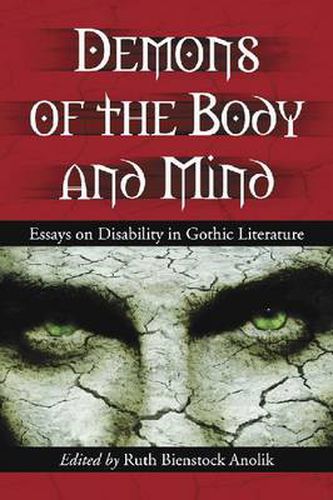Readings Newsletter
Become a Readings Member to make your shopping experience even easier.
Sign in or sign up for free!
You’re not far away from qualifying for FREE standard shipping within Australia
You’ve qualified for FREE standard shipping within Australia
The cart is loading…






This title is printed to order. This book may have been self-published. If so, we cannot guarantee the quality of the content. In the main most books will have gone through the editing process however some may not. We therefore suggest that you be aware of this before ordering this book. If in doubt check either the author or publisher’s details as we are unable to accept any returns unless they are faulty. Please contact us if you have any questions.
The Gothic mode, typically preoccupied by questions of difference and otherness, consistently imagined the Other as a source of grotesque horror. Paradoxically, the Other also became a pitiful figure, often evoking empathy. The sixteen critical essays in this collection examine the ways in which those suffering from mental and physical ailments were refigured as Other during the Gothic era, and how they were imagined to be monstrous. Together, the essays highlight the Gothic inclination to represent all ailments as visibly monstrous, even those, such as mental illness, which were invisible. This exploration of illness and disability represents a strong addition to Gothic studies.
$9.00 standard shipping within Australia
FREE standard shipping within Australia for orders over $100.00
Express & International shipping calculated at checkout
This title is printed to order. This book may have been self-published. If so, we cannot guarantee the quality of the content. In the main most books will have gone through the editing process however some may not. We therefore suggest that you be aware of this before ordering this book. If in doubt check either the author or publisher’s details as we are unable to accept any returns unless they are faulty. Please contact us if you have any questions.
The Gothic mode, typically preoccupied by questions of difference and otherness, consistently imagined the Other as a source of grotesque horror. Paradoxically, the Other also became a pitiful figure, often evoking empathy. The sixteen critical essays in this collection examine the ways in which those suffering from mental and physical ailments were refigured as Other during the Gothic era, and how they were imagined to be monstrous. Together, the essays highlight the Gothic inclination to represent all ailments as visibly monstrous, even those, such as mental illness, which were invisible. This exploration of illness and disability represents a strong addition to Gothic studies.